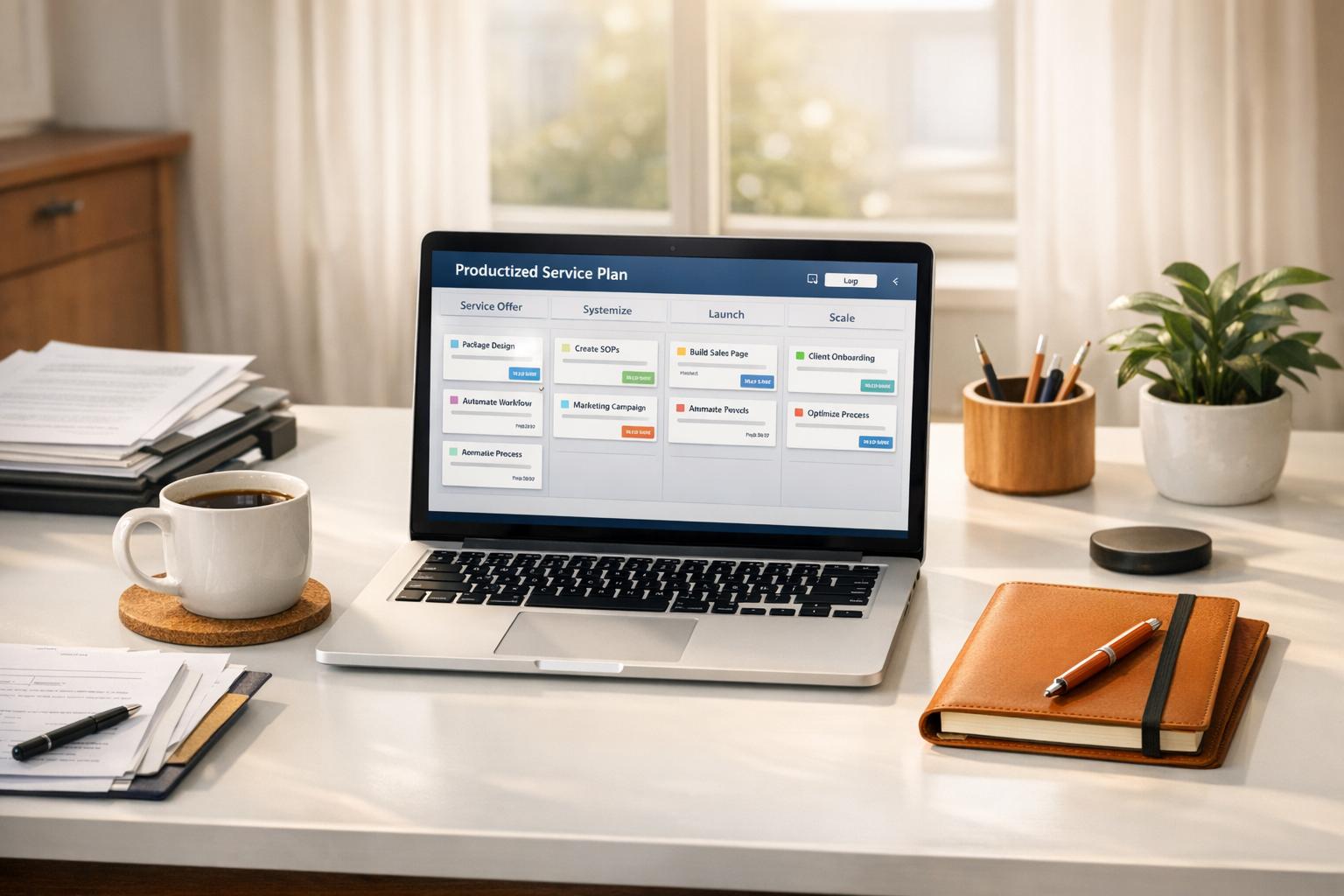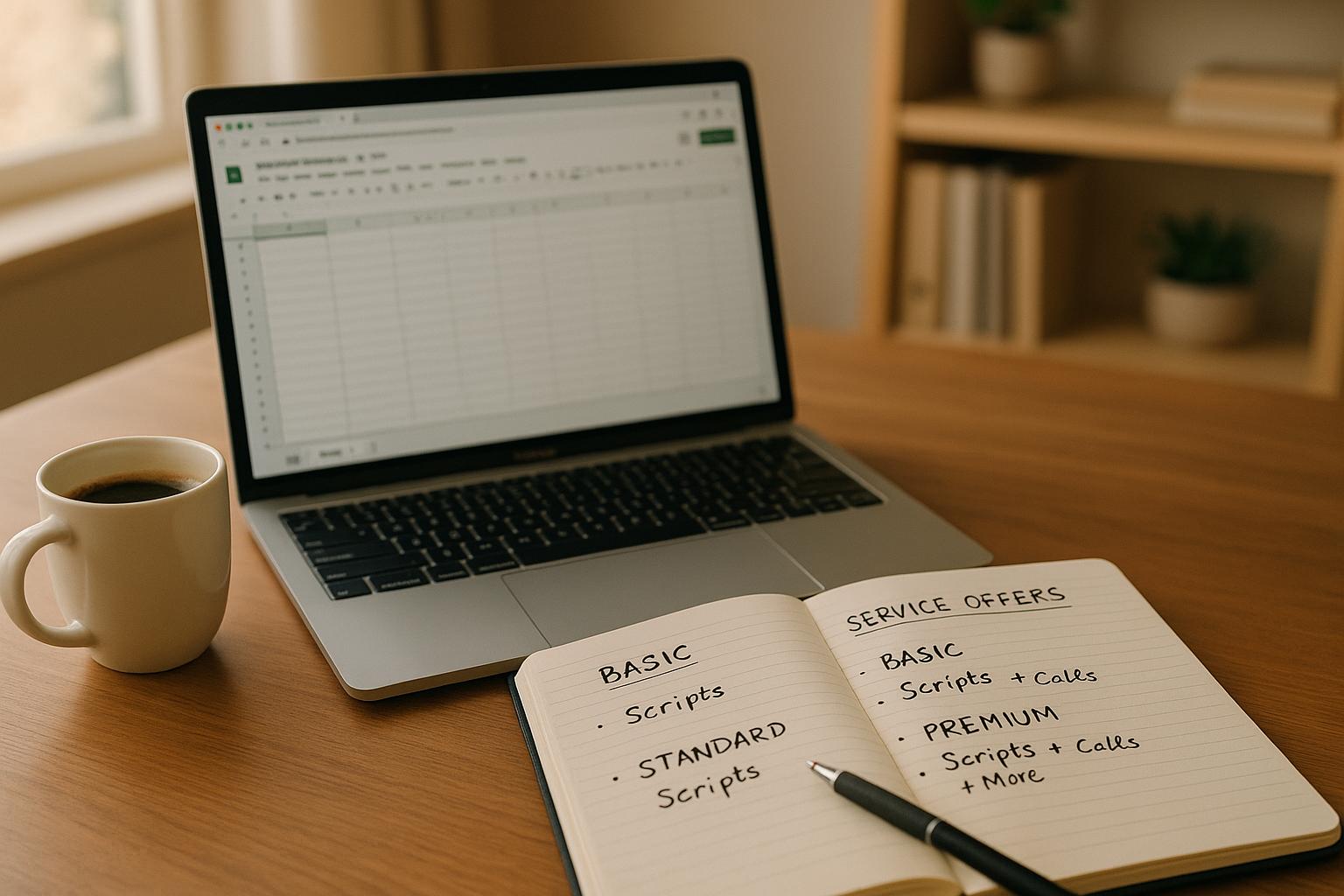
The "Three-Customer" Test is a simple method to validate your business idea by talking to just three potential customers. It helps you understand if your product solves a real problem and whether people are willing to pay for it. Here's how it works:
-
Why Three Customers?
Talking to three people is enough to spot patterns, catch inconsistencies, and get focused feedback without being overwhelming. -
Finding the Right People:
Create detailed customer profiles, then connect with them through forums, LinkedIn, or local events. Offer clear benefits or incentives to participate. -
Running Interviews:
Ask open-ended questions about their problems, experiences, and solutions they’ve tried. Avoid pitching, leading questions, or hypothetical scenarios. -
Analyzing Feedback:
Look for common themes, prioritize recurring problems, and refine your product based on what you learn. -
Deciding What’s Next:
Move forward if customers show strong interest or pivot if feedback suggests changes are needed.
This process saves time, reduces risk, and ensures your idea addresses real customer needs. It’s quick, actionable, and effective.
12 Best Ways to Test and Validate Your Business Idea
Step 1: Finding Your Test Customers
Customer analytics and detailed profiles can lead to a 5–8× marketing ROI. To connect with the right test participants, follow these steps:
Building Customer Profiles
Start by crafting detailed profiles of your ideal customers. Focus on these key elements:
| Profile Component | Key Details to Include |
|---|---|
| Demographics | Age, location, income, occupation |
| Pain Points | Daily challenges they face |
| Goals | What they aim to achieve |
| Behavior | How they make buying decisions |
| Budget | Spending capacity and willingness to pay |
Stick to 3–5 well-defined customer personas. As Mark Hollingworth explains:
"The reality is that strategic assumptions form an identical, underlying foundation for the strategic plan. They underpin everything contained therein – and hence reflect the vision, strategic map, performance targets and project portfolio which subsequently follow."
Once your profiles are ready, identify the platforms and spaces these customers frequent.
Where to Find Test Customers
With 71% of consumers expecting tailored interactions, focus on these effective channels:
- Industry-Specific Forums: Join forums where relevant discussions are happening.
- Professional Networks: Use LinkedIn to connect with professionals through personalized outreach.
- Local Events: Attend industry meetups or networking events to meet people face-to-face.
NetworkTrend highlights the importance of direct engagement:
"Talking with potential customers is not only valid, but really the only way. In order to create a solution that people are willing to pay for, you have to identify the problem. And the way to do that is talking with people."
After identifying potential customers, focus on engaging them effectively.
Getting Customers to Participate
Encourage participation by offering clear benefits or incentives. For instance, programs like Uber's free ride credits have proven effective.
- Be Specific: Avoid vague requests; instead, offer a concrete benefit.
- Make It Convenient: Provide flexible options like in-person or virtual meetings with minimal time commitments.
Personalize your approach to each customer, as 76% of consumers expect tailored experiences.
Step 2: Running Customer Interviews
Writing Interview Questions
Craft interview questions to uncover customer challenges and real-life experiences.
| Question Type | Example | Purpose |
|---|---|---|
| Problem-focused | "What's the hardest part about managing your inventory?" | Pinpoints specific issues. |
| Experience-based | "Describe your last encounter with this problem." | Highlights real situations. |
| Solution-seeking | "What solutions have you tried so far?" | Understands existing alternatives. |
| Impact-measuring | "How much time/money does this problem cost you?" | Quantifies the problem's effects. |
Use these types of questions to guide meaningful conversations during interviews.
Interview Tips and Techniques
Create a setting that encourages open and honest feedback:
- Set Clear Expectations: Start by explaining the purpose of the interview and encourage candid, even critical, input.
- Use Strategic Silence: After someone answers, pause. This often encourages them to share more details.
- Practice Active Listening: Confirm your understanding by summarizing responses (e.g., "So, what you're saying is...").
These techniques help build trust while ensuring the feedback you gather is useful.
Common Interview Mistakes
Avoid these common errors to ensure your insights remain unbiased:
| Mistake | Impact | Prevention |
|---|---|---|
| Pitching Your Idea | Influences responses | Focus on listening, not selling. |
| Leading Questions | Distorts feedback | Stick to open-ended questions. |
| Future Hypotheticals | Results in unreliable data | Ask about past experiences instead. |
| Interrupting | Misses key insights | Let the interviewee finish speaking. |
Always record interviews (with permission) and wrap up by asking, "What did I not ask?" and "Who else should I interview?" These final steps ensure you gather thorough and actionable insights to refine your business idea.
sbb-itb-08dd11e
Step 3: Understanding Customer Responses
Finding Common Themes
To turn feedback into actionable insights, start by organizing all responses in one place. Use a structured tagging system to identify patterns and categorize feedback effectively:
| Theme Level | Example | Purpose |
|---|---|---|
| Primary Issue | Payment Problems | Identify broad categories |
| Sub-Issue | PayPal Integration | Pinpoint specific problems |
| Root Cause | API Connection Failure | Diagnose technical issues |
| Impact Level | High/Medium/Low | Assess priority levels |
Track how often issues occur and analyze customer sentiment to focus on recurring pain points. If conflicting insights arise, address them carefully to avoid overlooking critical details.
Handling Mixed Feedback
When customers share conflicting opinions, focus on understanding the context behind their viewpoints. Segment feedback based on customer profiles and use cases to uncover why different users have varying needs.
Here’s what to evaluate when dealing with mixed responses:
| Factor | Evaluation Question | Action Step |
|---|---|---|
| Usage Pattern | How often do they encounter the issue? | Identify frequency trends |
| Business Impact | What’s the cost of the problem? | Estimate potential ROI |
| Implementation Effort | How complex is the solution? | Assess required resources |
| Market Size | How many customers share this need? | Gauge scalability |
These insights can help you prioritize solutions and refine your strategy moving forward.
Updating Your Business Plan
Use the validated insights to fine-tune your business concept, ensuring it addresses core problems while maintaining profitability.
Key areas to focus on:
1. Value Proposition
Make sure your offering directly solves the most common and pressing challenges identified in the feedback.
2. Market Segmentation
Narrow down your target audience based on those who showed the greatest interest and need for your solution. If necessary, consider introducing multiple service tiers to cater to different customer segments.
3. Revenue Model
Adjust your pricing and payment options based on customer feedback about perceived value and their willingness to pay. Also, take into account the actual financial impact of the problem you’re solving.
Step 4: Making Decisions
Moving Forward
When customers show genuine interest and enthusiasm, it's a clear sign to proceed. Pay attention to these key signals:
| Signal | What to Look For | Action Required |
|---|---|---|
| Problem Urgency | Customers actively searching for solutions | Document specific challenges they face |
| Purchase Intent | Willingness to pay right away | Develop a clear pricing strategy |
| Engagement Level | Detailed feedback and follow-up inquiries | Build an actionable plan |
| Market Size | Interest across multiple segments | Focus on the most promising target groups |
These signals are your validation checkpoints. Use them to refine your approach and make informed decisions.
Making Changes
Customer feedback often requires quick adjustments. Prioritize these areas:
-
Value Proposition Alignment
Ensure your solution genuinely meets customer needs. If recurring feedback highlights overlooked features or benefits, integrate those into your offering. -
Market Positioning
Identify which customer segments are most engaged. For example, if over 40% of a specific group shows strong interest, consider narrowing your focus to better serve them. -
Product Development
Use a clear process to incorporate feedback into product updates. Address critical changes immediately, while scheduling less urgent updates for later.
If these adjustments don’t lead to stronger validation, it may be time to pause or rethink.
Stopping or Starting Over
Sometimes, the best move is to pause or pivot. Watch for these warning signs:
| Red Flag | Description | Next Steps |
|---|---|---|
| Low Response Rate | Weak engagement with outreach efforts | Reevaluate the problem you're addressing |
| Minimal Enthusiasm | Lack of strong interest | Reassess your value proposition |
| Price Resistance | Customers unwilling to pay your proposed price | Revisit and adjust your pricing model |
| Confusing Feedback | Responses lack focus or clarity | Simplify and clarify your core offering |
"Ratios are not the most important factor here - instead you should be looking for evidence that something about your idea creates excitement since people need that to abandon the status quo."
– Ryan Metzger
If you encounter multiple red flags, consider these options:
- Pivot to a related issue that surfaced during customer discussions
- Conduct further research targeting a different customer segment
- Step back and refine your core idea before continuing with testing
Conclusion: Test Results Matter
By following the steps outlined, you've collected important customer feedback that can guide your decisions. The Three-Customer Test helps lower risks, aligns your product with what the market wants, and avoids wasting resources.
Key Advantages of Customer Testing
| Advantage | Impact | Example Outcome |
|---|---|---|
| Lower Risk | Avoids expensive mistakes | Confirmed product features |
| Market Relevance | Speeds up delivering solutions | Better match to customer needs |
| Cost Efficiency | Reduces unnecessary spending | Smarter use of resources |
"There are no facts inside your building."
– Steve Blank, Silicon Valley entrepreneur and creator of the customer development methodology
How IdeaFloat Simplifies Testing

IdeaFloat turns raw customer feedback into measurable insights, helping you make decisions based on real data. It not only validates your idea but also provides tools to streamline the testing process.
With IdeaFloat, you can use tools like the Feedback Generator to create custom forms for gathering input from potential customers. The Validation Score then evaluates your idea's potential by analyzing key metrics.
Take Airbnb's early days as an example: the founders gained critical insights by engaging directly with potential customers. This approach shaped their eventual success.
Related Blog Posts
Get the newest tips and tricks of starting your business!


